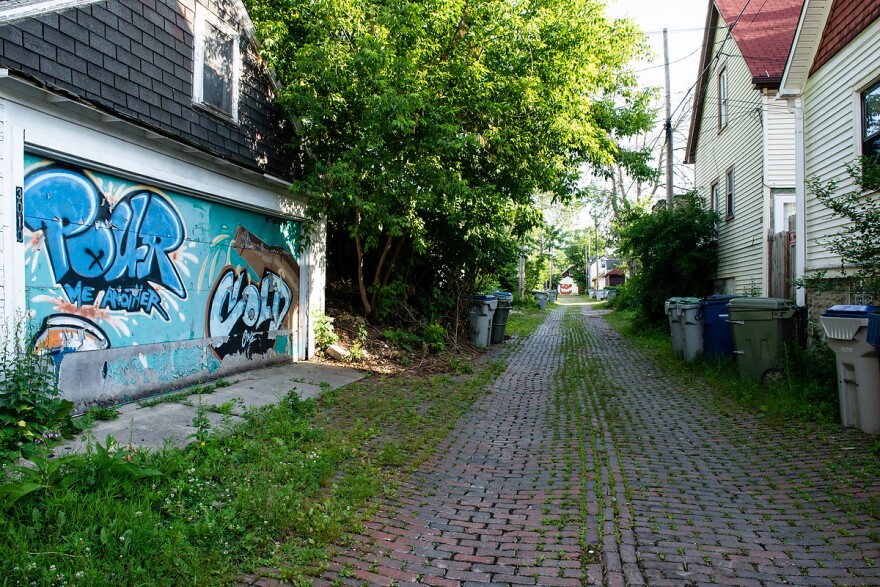Milwaukee’s empty storefronts and alleys have become a lot more colorful since the protests over police brutality began. Artists have been putting up murals all around the city. The work is a tangible expression of the energy behind these demonstrations.
But as essayist Barbara Miner found out, you might miss them if you’re not looking in the right places. She talks about her own discoveries in her essay Milwaukee’s Alleys: A Hidden Treasure.
I remember the first time I was fascinated by an alley, I was about 7 or 8 years old, and it was the alley at my Aunt Dorothy’s house on Van Buren Street. My family lived in Wauwatosa, with nice big yards but none of the urban grit of homes near downtown Milwaukee.
There was something forbidden, and therefore enticing, about that alley. I remember my Aunt Dorothy sending my brother and me into the yard to play, but making it clear to stay away from the alley. Which, of course, made me want to climb over the fence and run down that alley. Instead, I usually settled for a quick jump up and a glance, knowing that before long my Aunt Dorothy would yell out from the kitchen window and tell me to stop.
For several years, I lived along an alley in the Riverwest neighborhood. I fell in love with the sheer practicality of my alley — the garage, the garbage cans, the electrical transformers and telephone poles — all conveniently placed out of sight.
For the last 25 years, I have lived without an alley or a garage, but with the benefit that our yard is unusually big for Riverwest. I spend much of the winter waiting for the warmer weather so I can sit outside, coffee in hand, and read my newspaper.
Until recently, I didn’t think too much about my neighborhood’s alleys — I had become used to walking along the sidewalk. But then COVID-19 struck.
My morning walks with my husband became a lifeline to sanity. And as much as I love my neighborhood, it got a bit boring to walk up and down the same streets.
One day, on a whim, we decided to walk down the alley instead of the sidewalk. A neighborhood I thought I knew like the back of my hand took on fascinating and unexpected complexities. Among other things, I had forgotten how many smaller, second homes were built on the alley-end of a lot.
And who knew there were so many types of fences separating backyards and alleys — chain-link fences, wooden fences five feet high, wooden fences three feet high, lannon stone fences, cinder block fences.
The occasional basketball hoop or elaborate garden, meanwhile, spoke to the long tradition of alleys as a second back yard.
And yes, there were lots of electric and gas meters, garbage and recycling cans. My husband and I even took to counting the meters in order to figure out how many units there might be in an exceptionally large rental property. It was the early days of the COVID-19 shutdown, and we were bored.
More recently, as part of the outrage following the killing of George Floyd, alleys have become home to socially conscious public art. Just off Locust and Holton streets, for instance, a once drab alleyway has been transformed into a multi-colored homage to Black resistance and freedom fighters.

Alleys, it turns out, have been a long-standing feature of cities, dating back to the middle ages. In the United States, they are mostly found in older cities. With the growth of the car culture, suburban developments opted for so-called “front-loaded” garages as a way to proudly display that one could afford a beautiful building merely for one’s car.
In Milwaukee, alleys have been a part of the city since its founding charter in 1846, when alleys were used for barns for horses and carriages and, in commercial areas, for deliveries. According to the Encyclopedia of Milwaukee, to this day the city maintains about 400 miles of alleys.
Next time your sense of adventure is thwarted by COVID-19, don’t worry. You don’t need to travel far away to explore a new world: just find a Milwaukee alley.






